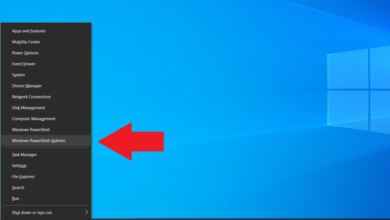Introduction to the Brain and Visual Processing
The brain is a marvel of complexity, operating like an clipart:ee-zgj_h1oc= brain intricate network that processes information at lightning speed. Among its many functions, visual processing stands out as a vital skill that shapes how we perceive the world around us. Imagine walking through a vibrant forest or admiring art in a gallery; your brain is constantly interpreting colors, shapes, and movements to create a seamless experience.
But what if you could enhance this incredible ability? By stimulating your brain’s visual processing power, you can unlock new levels of creativity and comprehension. Whether you’re looking to improve focus for academic success or simply want to enjoy life’s visuals more vividly, there are countless ways to sharpen these skills. Dive into the fascinating world of visual processing and discover how it can transform not just your perception but also your overall cognitive health.
Benefits of Stimulating the Brain’s Visual Processing Power
Stimulating the brain’s visual processing power offers a multitude of benefits. clipart:ee-zgj_h1oc= brain Enhanced visual skills can lead to improved comprehension and retention of information, making learning more effective.
Sharpening these abilities also boosts creativity. When your mind interprets images swiftly, it opens doors to innovative thinking and problem-solving.
In daily activities, better visual processing translates into increased efficiency. Tasks such as reading maps or recognizing patterns become easier and quicker.
Additionally, engaging in exercises that challenge your vision helps maintain cognitive health as you age. Keeping the brain active is essential for long-term mental agility.
Moreover, strong visual processing is crucial for physical coordination in sports or other hands-on activities. Improved hand-eye coordination can elevate performance levels significantly in various pursuits.
Activities and Exercises to Stimulate Visual Processing
Engaging in specific activities can significantly enhance visual clipart:ee-zgj_h1oc= brain processing skills. Puzzles are a great start. They encourage spatial awareness and problem-solving.
Drawing or coloring stimulates the brain’s creative side while improving hand-eye coordination. Try sketching objects from different angles to challenge perception.
Another fun exercise involves playing memory games with cards featuring various images. This sharpens recall abilities and encourages quick thinking.
Outdoor activities, like scavenger hunts, promote observation skills. clipart:ee-zgj_h1oc= brain Searching for specific items enhances attention to detail and fosters critical thinking.
Incorporating sports can also be beneficial, especially those that require clipart:ee-zgj_h1oc= brain tracking moving objects, such as basketball or soccer. These games develop reaction time and visual-motor integration.
Digital apps designed for cognitive training often include exercises aimed at boosting visual processing speed. These tools provide an interactive way to enhance your skills while having fun!
The Role of Technology in Boosting Visual Processing Skills
Technology has become a powerful ally in enhancing our brain’s visual clipart:ee-zgj_h1oc= brain processing skills. With the rise of interactive apps and games, learning can be both engaging and effective. These tools challenge users to recognize patterns, identify objects quickly, and improve hand-eye coordination.
Virtual reality (VR) offers immersive experiences that stimulate visual perception in ways traditional methods cannot. Users navigate lifelike environments, enhancing spatial awareness while having fun.
Additionally, online platforms provide tailored exercises designed to clipart:ee-zgj_h1oc= brain strengthen specific visual skills. From puzzles to memory games, they cater to various age groups and skill levels.
Wearable tech also plays a part by clipart:ee-zgj_h1oc= brain tracking progress over time. This data-driven approach allows for personalized adjustments to training routines based on performance metrics.
Incorporating technology into daily practice not only makes learning enjoyable but also fosters an adaptive mindset for growth in visual processing abilities.
Tips for Incorporating Visual Stimulation into Daily Life
To enhance your brain’s visual processing, start by being mindful of your clipart:ee-zgj_h1oc= brain surroundings. Engage with vibrant art or colorful decor in your home. This simple change can invigorate your visual senses.
Consider incorporating puzzles into your routine. clipart:ee-zgj_h1oc= brain Jigsaw puzzles and spatial reasoning games provide excellent opportunities for stimulating visual perception while making it fun.
Utilize nature walks to observe patterns and colors in the environment. Take a moment to appreciate details you usually overlook, like textures on tree bark or the shapes of leaves.
Explore virtual reality experiences if you’re tech-savvy. They offer immersive visuals that challenge and engage different areas of the brain.
Take breaks from screens every hour. Close your eyes briefly, then open them wide to refocus on distant objects before returning to work—this will refresh both your mind and vision!
Potential Risks and Precautions to Consider
When stimulating the brain’s visual processing abilities, it’s clipart:ee-zgj_h1oc= brain essential to be aware of potential risks. Overstimulation can lead to fatigue or headaches. It’s crucial to take breaks during intense activities.
Some individuals may experience discomfort from certain visual stimuli. Bright colors or rapid movements can be overwhelming for sensitive eyes. Listening to your body is key.
Additionally, excessive screen time poses a risk for everyone. clipart:ee-zgj_h1oc= brain It can strain vision and disrupt sleep patterns. Balancing technology use with other forms of stimulation is important.
If you have pre-existing clipart:ee-zgj_h1oc= brain conditions like migraines or eye disorders, consult a healthcare provider before beginning any new exercises aimed at enhancing visual processing skills. Taking these precautions ensures that your journey into boosting brain function remains safe and enjoyable without setbacks along the way.
Conclusion: Unlocking the Power of Your Brain’s Visual Processing Abilities
Unlocking the potential of your brain’s visual processing clipart:ee-zgj_h1oc= brain abilities can lead to numerous benefits. By engaging in various activities and exercises, you enhance not only your cognitive skills but also your overall quality of life. Technology provides innovative ways to stimulate these skills, making learning more enjoyable and interactive.
Incorporating simple visual stimulation techniques into daily routines can be both fun and effective. However, it’s important to remain mindful of potential risks associated with overstimulation or excessive screen time.
By understanding how the brain processes visuals and taking proactive steps toward enhancement, you empower yourself with valuable tools for growth. Embracing this journey opens doors to creativity, problem-solving, and deeper comprehension of the world around us. clipart:ee-zgj_h1oc= brain The power lies within your grasp; it’s time to unlock it.




